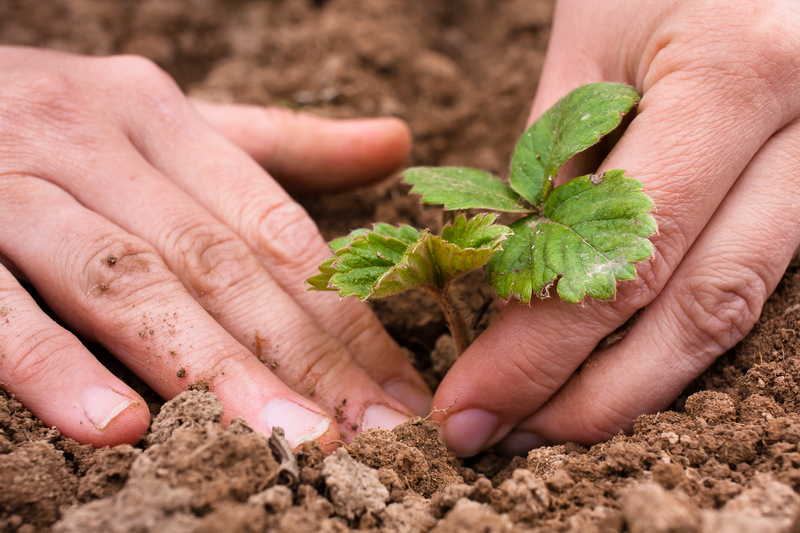Steps for a Mobile Garden Setup
Posted on 09/03/2025
In a world where space is a premium and the desire for fresh produce has never been greater, mobile gardens offer an innovative solution. Whether you are an urban dweller with limited outdoor space or a seasoned gardener on the move, setting up a mobile garden can be both rewarding and practical. This article delves into the comprehensive steps for a mobile garden setup, providing you with essential tips, and highlighting the pros and cons of this innovative gardening approach.
1. Selecting the Right Plants
The first step in setting up a mobile garden is choosing the right plants. Opt for plants that are well-suited for container growing. Herbs, salad greens, tomatoes, and peppers are excellent choices due to their adaptability and manageable size. Additionally, consider the plants' sunlight, water, and temperature needs to ensure they thrive in a mobile environment.

2. Choosing the Appropriate Containers
Selecting the right containers is vital for a mobile garden. Look for containers that are lightweight, sturdy, and have adequate drainage holes. Materials like plastic, resin, or fabric pots are ideal because they are easy to move and handle. The size of the containers should be appropriate for the type and number of plants you intend to grow. Ensure the containers are easy to transport, especially if you plan on moving them frequently.
3. Creating a Suitable Soil Mix
A high-quality soil mix is crucial for the success of your mobile garden. Opt for a lightweight, well-draining potting mix that contains organic matter. Adding perlite or vermiculite can improve aeration and drainage. A good soil mix provides necessary nutrients and helps retain moisture, ensuring your plants remain healthy and vibrant.
4. Setting Up a Watering System
Consistent watering is a key factor in mobile gardening. Consider setting up a self-watering system, such as wicking containers or drip irrigation, to ensure your plants receive a consistent water supply even when you are on the go. Alternatively, you can use portable water reservoirs or watering cans to manually water the plants. Ensure the containers have proper drainage to prevent waterlogging.
5. Providing Adequate Lighting
Mobile gardens often require supplemental lighting, especially if you don't have access to natural sunlight. Choose LED grow lights that are energy-efficient and provide the full spectrum of light your plants need for photosynthesis. Position the lights at an appropriate distance from the plants and adjust the height as they grow to ensure they receive adequate light.
6. Ensuring Proper Mobility
Since the essence of a mobile garden is its mobility, ensure your setup is easy to move. Use plant caddies or trolleys with wheels to make transportation a breeze. Additionally, prioritize containers with handles or those that can be easily lifted. Regularly assess the health and stability of your mobile garden, especially during transportation, to prevent any damage to the plants.
Pros and Cons of Mobile Gardening
Pros
- Flexibility: Easily move plants according to climate conditions or personal preferences.
- Space Efficiency: Ideal for small spaces, apartments, and urban environments.
- Year-Round Gardening: Grow plants indoors with appropriate setup.
- Customizable: Tailor the garden to meet specific needs and preferences.
Cons
- Limited Root Space: Restrictions on plant types due to container size.
- Watering Challenges: Requires vigilant watering practices.
- Transport Risks: Potential damage to plants during frequent moves.
- Initial Costs: Investments in containers, soil, and lighting setup.
Tips for Successful Mobile Gardening
- Choose hardy and adaptable plants that thrive in containers.
- Regularly monitor soil moisture and plant health.
- Utilize multi-functional containers that provide good insulation and drainage.
- Rotate plants to ensure even light distribution.
- Consider using vertical space with hanging pots or wall-mounted containers.

Takeaways
- Mobile gardening is a versatile solution for gardeners with limited space.
- A successful mobile garden setup requires careful selection of plants, containers, and soil.
- Consistent watering and adequate lighting are crucial for plant health.
- Pros and cons should be weighed to determine if mobile gardening suits your lifestyle.
Conclusion
Setting up a mobile garden may seem like a daunting task, but with the right approach and knowledge, it can be a fruitful endeavor. By following the outlined steps, carefully considering the pros and cons, and applying the provided tips, you can create a thriving mobile garden that brings joy and fresh produce to your life, regardless of your space constraints. Embrace the journey of mobile gardening and relish the rewards of this innovative, flexible, and sustainable gardening practice.







